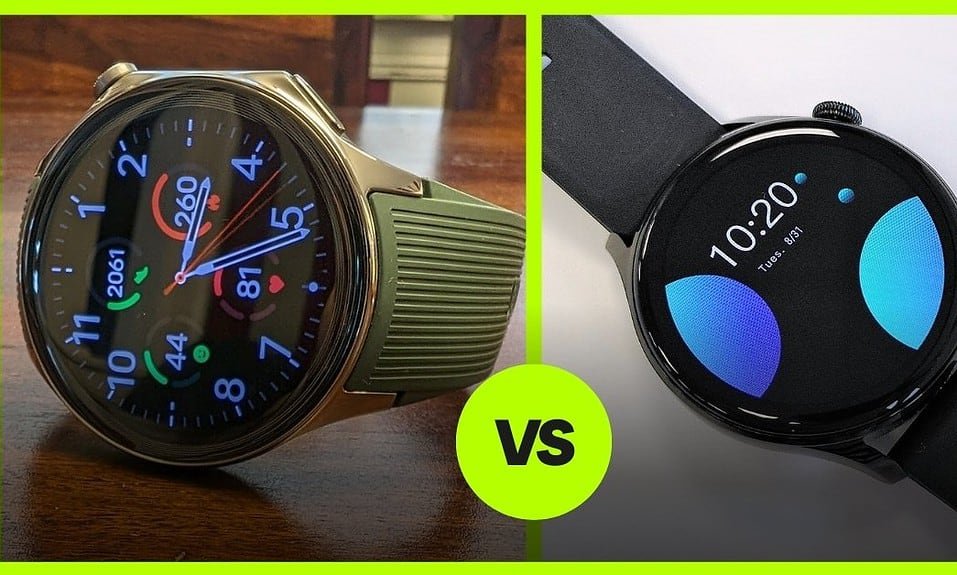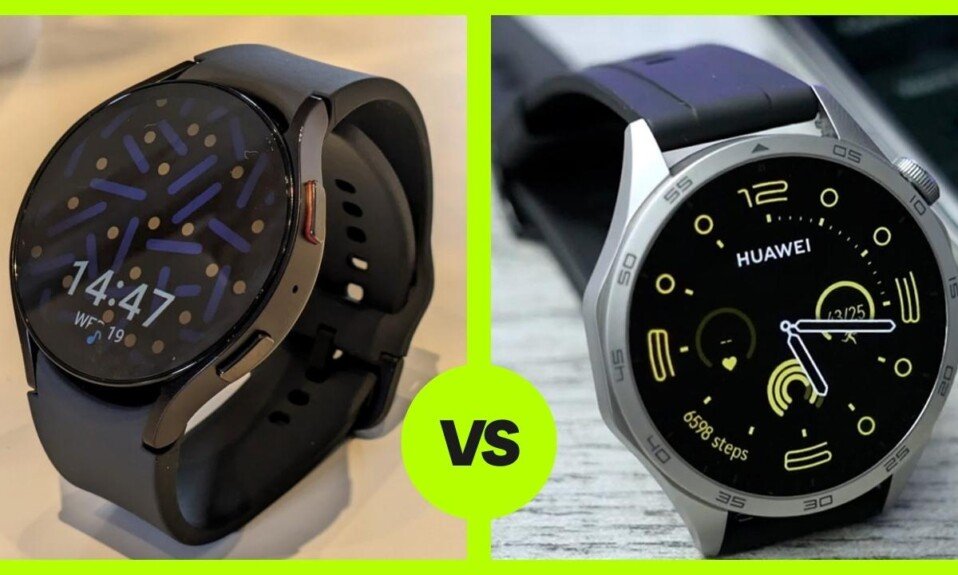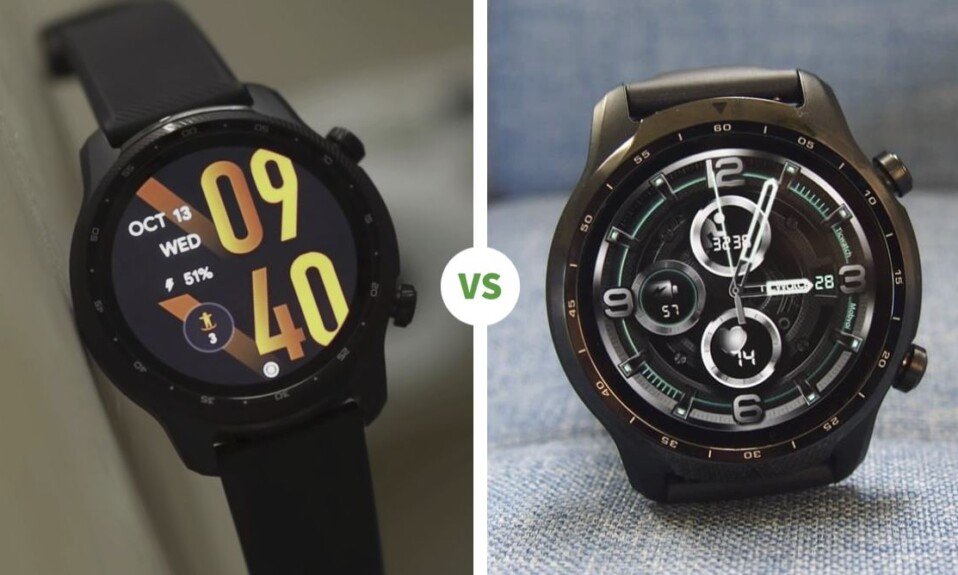After a series of leaks, Fitbit has announced a new generation of Fitbit Charge 5 fitness bracelets. This is the first wristband made by Fitbit since Google acquired it. Due to the relatively high cost and low availability of Fitbit fitness bracelets, devices from this line are not very popular in our market. Nevertheless, we decided to compare Fitbit Charge 5 and Fitbit Charge 4, find out how they differ, and it is worth selling your Charge 4 and ordering a fifth-generation tracker. Let’s start with the comparison with the main technical characteristics.
Check out detailed review here: Fitbit Charge 5
Pros and Cons
| Fitbit Charge 5 | Fitbit Charge 4 |
| AMOLED color touchscreen | Built-in GPS |
| SpO2, ECG, EDA sensors | Sleep tracking is fantastic |
| GPS, HRM, NFC | GPS, HRM, NFC |
| Bright color screen | Slim, lightweight case |
| No physical buttons | Lacks a color display |
| $30 more than the Charge 4 | Low visibility in direct sunlight |
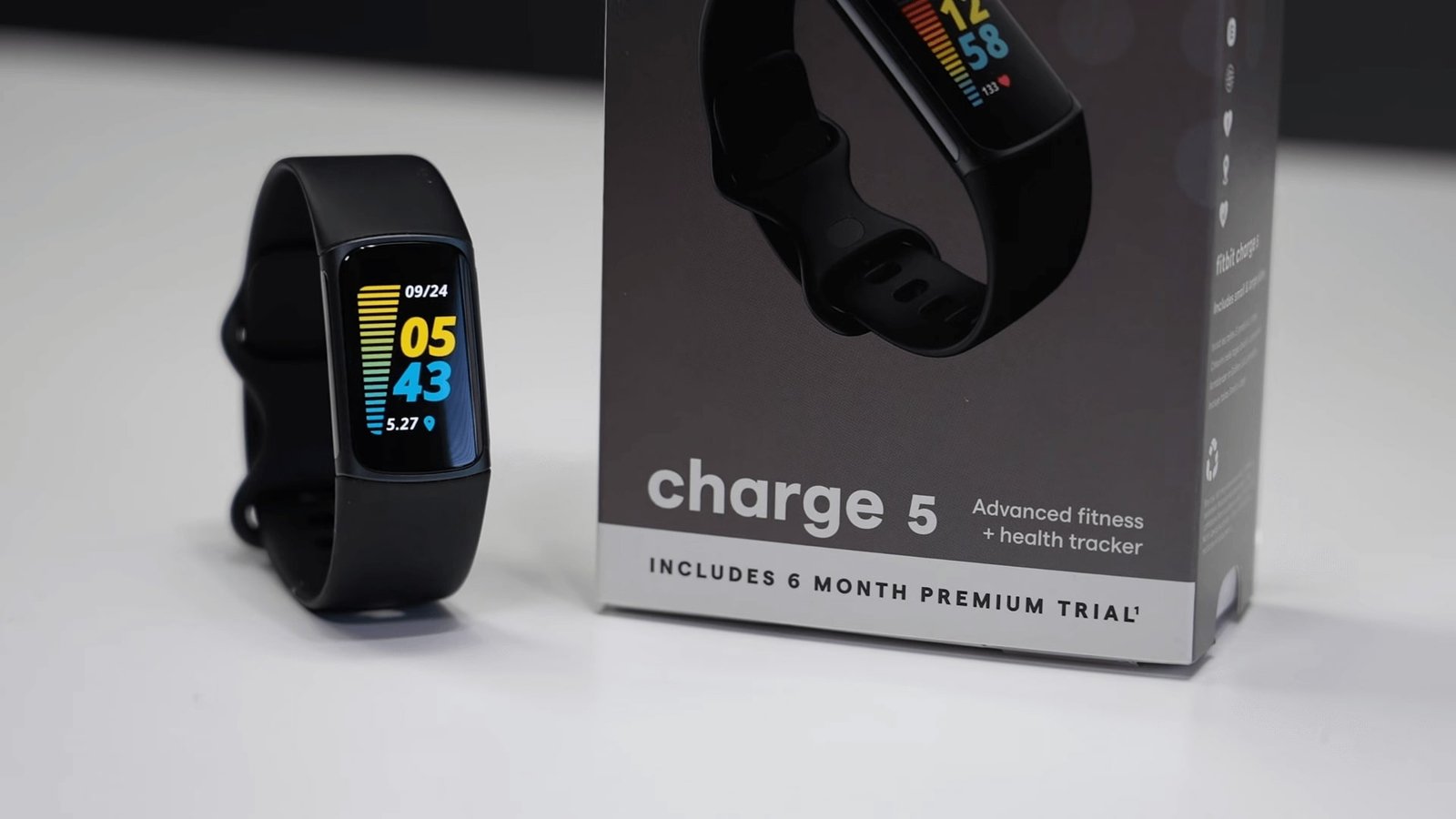
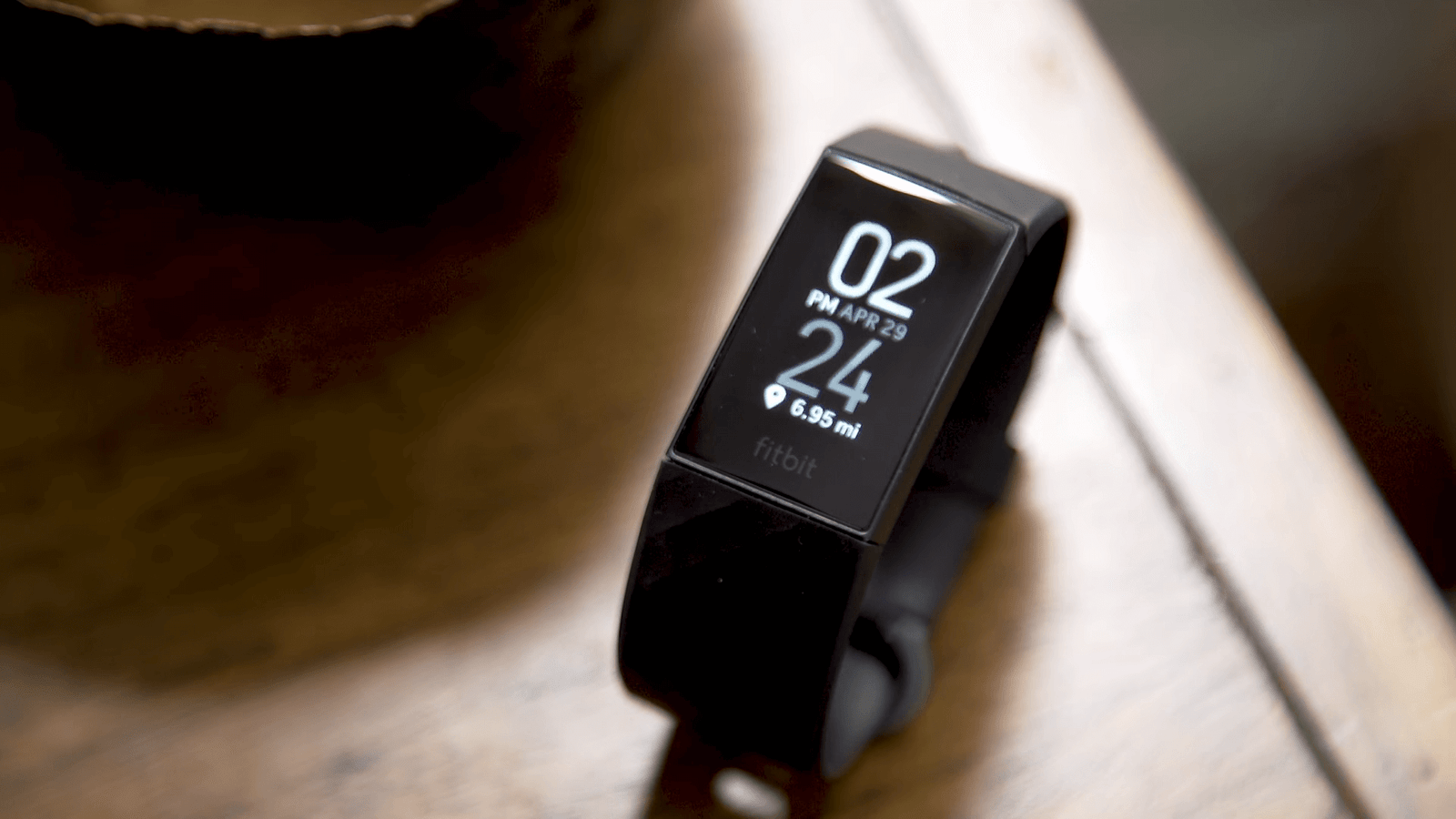
Specification
| Fitbit Charge 5 | Fitbit Charge 4 | |
| $ | CHECK PRICE | CHECK PRICE |
| Brand | Fitbit | Fitbit |
| Released | September 2021 | April 2020 |
| Display | 1.0 inch | 1.0 inch |
| Screen type | AMOLED (color) | OLED (monochrome) |
| Resolution | 260 x 170 pixels | 160 x 100 pixels |
| Case material | Stainless steel | Plastic |
| Connectivity | Bluetooth, NFC, GPS | Bluetooth, NFC, GPS |
| Sensors | Optical heart rate sensor, accelerometer, SpO2 sensor, ECG sensor, temperature sensor, electrodermal activity sensor, ambient light sensor | Optical heart rate sensor, accelerometer, SpO2 sensor, temperature sensor, altimeter |
| Water resistance | 5ATM | 5ATM |
| Dimensions | 36.78 x 22.79 x 11.2mm | 35.8 x 22.7 x 12.5mm |
| Weight | 30g | 28g |
| Battery | Up to 7 days | Up to 7 days |
| App | Fitbit Pay | Fitbit Pay |
Design
Over the years, since the first tracker in the Charge family came out, Fitbit has followed the same design. So, to find the external difference between the Charge 4 and its predecessor Charge 3 is quite difficult. The new Fitbit Charge 5 has received the most noticeable design change since the first generation.
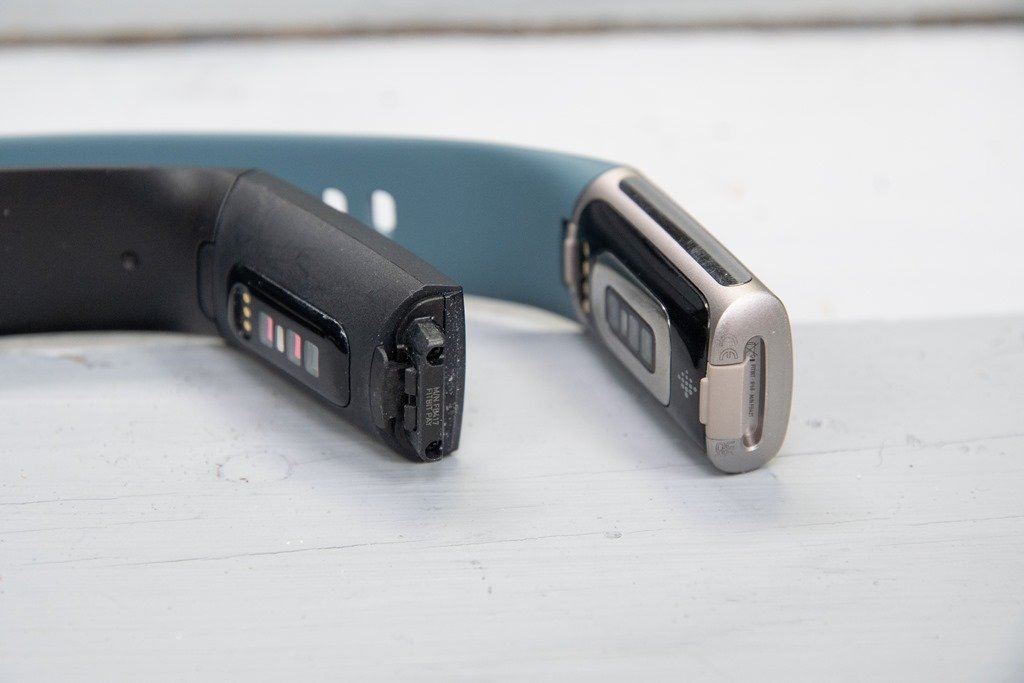
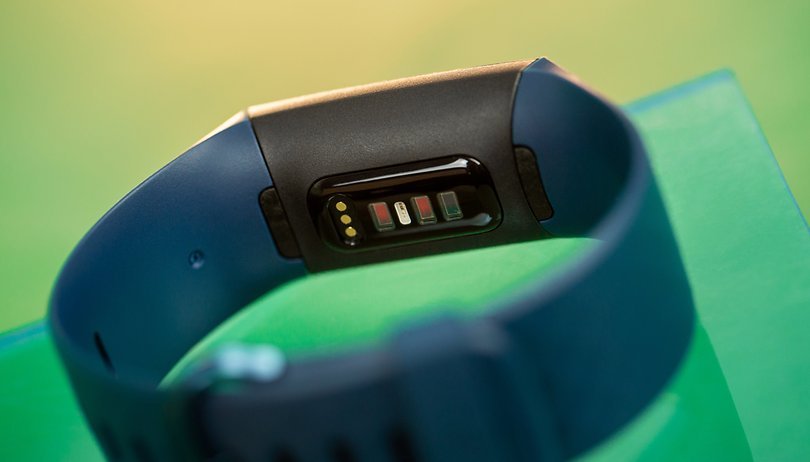
Fitbit Charge 5 received smoother lines and rounded design, became a little thinner and more comfortable than its predecessors. Charge 4 measures 35.8 mm x 22.7 mm x 12.5 mm, while Charge 5 measures 36.78 mm x 22.79 mm x 11.2 mm. That is, Charge 5 is slightly larger, but thinner by almost 10%
Fitbit Charge 5 and Charge 4 lack a mechanical button on the case. But, instead of the usual control, the fourth generation tracker has small notches on the sides; when pressed, the tracker is activated (capacitive button). The metal inserts on the sides of the Charge 5 can also be mistaken for a capacitive button, but they are ECG sensor electrodes. All control is carried out using the touch screen.

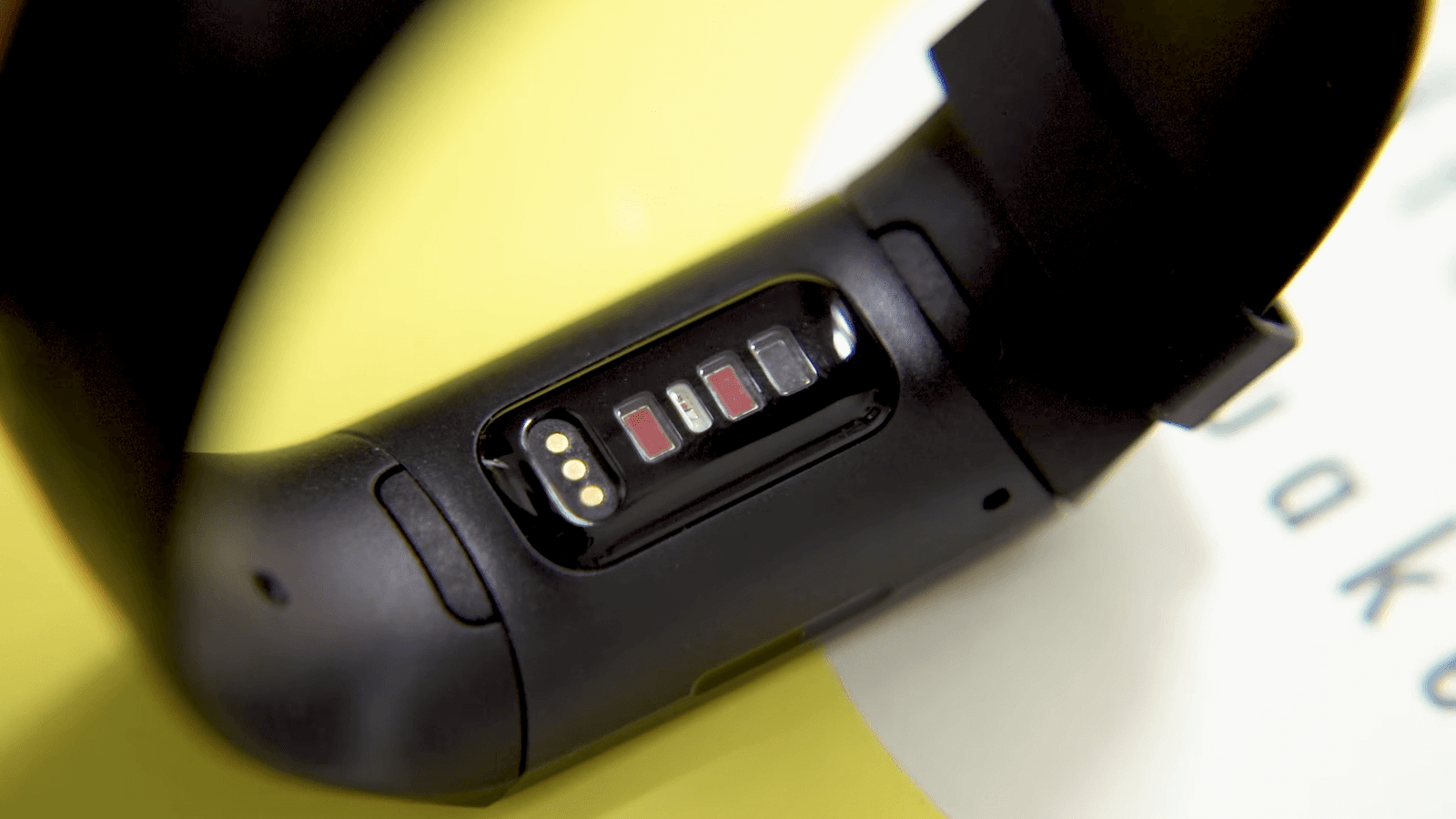
Both fitness trackers are water-resistant to 50 meters and come with large and small straps. The Charge 4 is available in black, blue, Rosewood, and a particular version with a black case and fabric strap. The Charge 5 is available in black, silver, and gold.
The hook Type of the strap has changed. Now it is not a classic clasp but a “tip-in” pin clasp.
Display
The display is the second major update after the design. The new generation, unlike the Charge 4, which has a monochrome OLED grayscale screen, has a color AMOLED display with higher resolution and brightness. The Charge 5’s 1.04-inch screen with a maximum brightness of 450 nits is 10% more than its predecessor (Charge 4’s brightness is 200 nits). Its resolution is 260 x 170 pixels, versus 160 x 100 pixels for the previous model.
Fitbit Charge 5 has an Always-on Display feature and an ambient light sensor to adjust brightness automatically.
In terms of sensors, the Charge 4 features a 3-axis accelerometer, PPG optical heart rate sensor, SpO2 sensor, altimeter, skin temperature sensor, and built-in GPS for more accurate tracking of outdoor activities like running and cycling.
The Charge 5 has all of the above equipment except the altimeter. Perhaps they abandoned it because users often complained about its accuracy. But this is just our guess.
The new 5 series comes with electrocardiogram (ECG) sensors and an electrodermal activity sensor. The latter allows you to assess the body’s response to stress. Also, both models are equipped with an NFC module for contactless payment (Fitbit Pay payment system).
Advance Features
| GPS | Yes | Yes |
| Notifications | Yes | Yes |
| NFC | Yes | Yes |
| EDA sensor | Yes | No |
| ECG sensor | Yes | No |
| Heart rate monitor | Yes | Yes |
| Step counter | Yes | Yes |
| Swim-proof | Yes | Yes |
| Stress level tracker | Yes | No |
Both generations of a fitness bracelet can perform the following functions:
- Sleep Score;
- Smart alarm clock (Smart Wake);
- Monitoring of multiple sports modes (indoor and outdoor);
- 24/7 heart rate measurement (PurePulse); Determination of the level of blood oxygen saturation (SpO2);
- Call and message notifications with support for fast message reply;
- Control of menstrual cycles; Activity reminders; Spotify Music Play Control Connect & Control;
- Heatmaps of workouts (after a run, a route map with heart rate zones for each leg of the route will be available)
The Charge 5 has several new features:
- Daily Readiness Score. This functionality is only available with the purchase of a paid Fitbit Premium subscription ($ 10 per month). Depending on the user’s activity, sleep duration, and heart rate, the bracelet will offer a more intense or light workout.
- ECG recording function to evaluate the work of the heart and detect signs of atrial fibrillation. To take readings, you need to touch the conductive inserts on the ends of the case with your fingers.
- Determination of stress levels with electrodermal activity sensors (EDA)
The rest of the functionality of this pair of trackers is almost identical.
Battery
For Charge 5 and Charge 4, the manufacturer claims the same autonomy. The battery charges to 100% in about 2 hours, and one charge will last up to 7 days of use. With GPS always on, the charge lasts for 5 hours.
When you enable the Always-on Display function, the Charge 5 will work without charging for about 2 days
Price
The Charge 5 was priced at $ 179.95, which is $ 30 more than the Charge 4 was priced at when it was announced. Usually, soon after a new version is released, Fitbit and most retailers will drop the price of the previous generation. That is, you can expect that the difference in cost will soon be $ 40 – 50.
Conclusion!
The main improvements to the Charge 5 are a more modern design, color AMOLED display, ECG, and electrodermal activity sensors. If you can come to terms with the lack of all of the above, selling your Charge 4 is probably not worth it.

